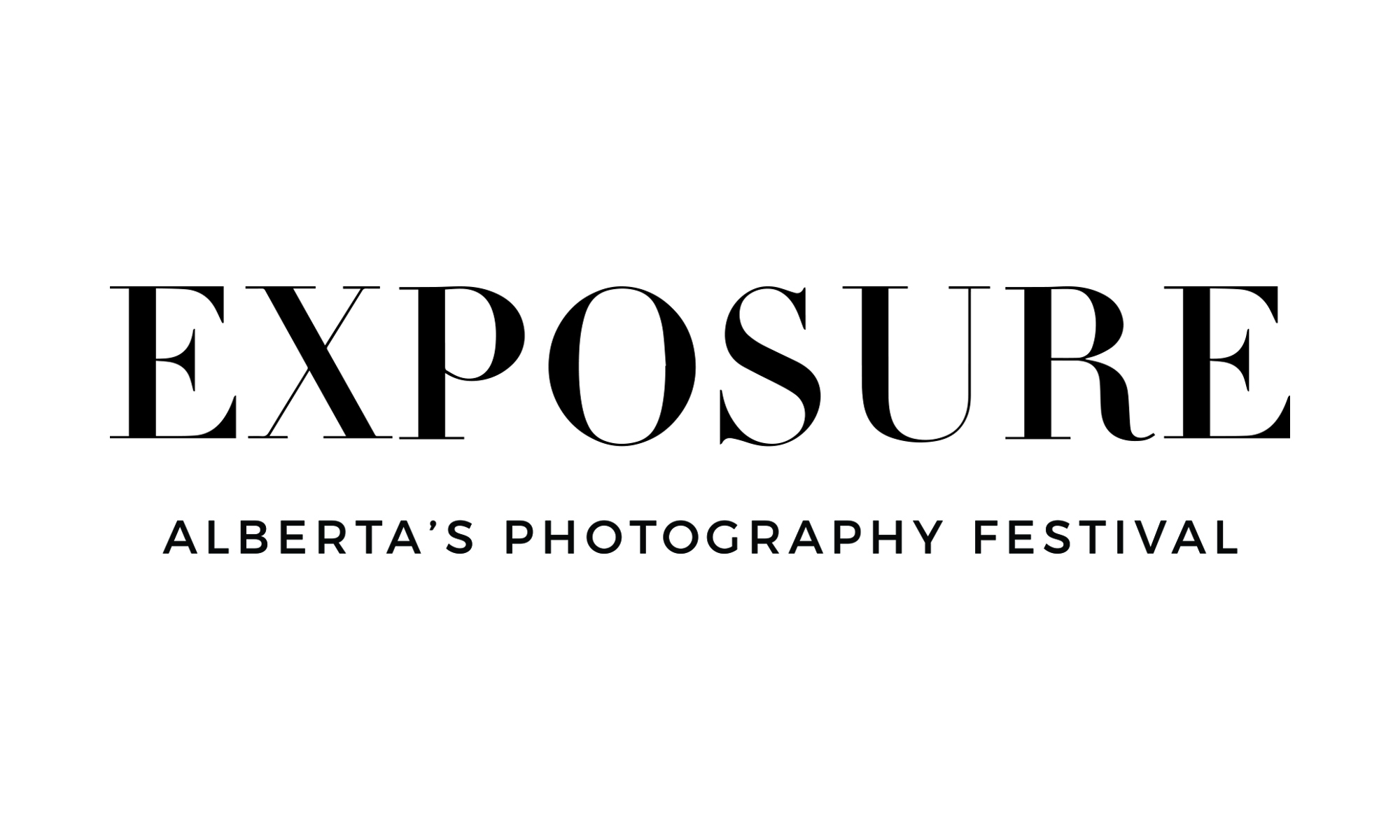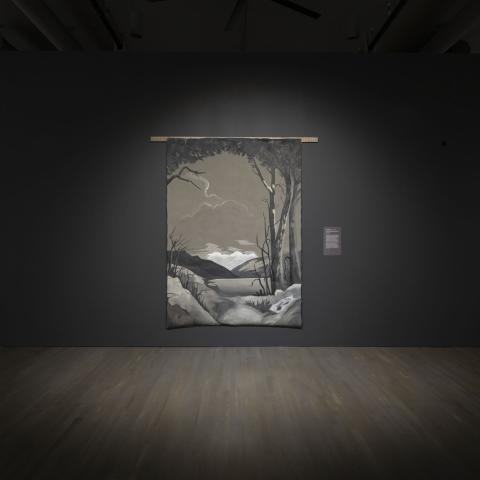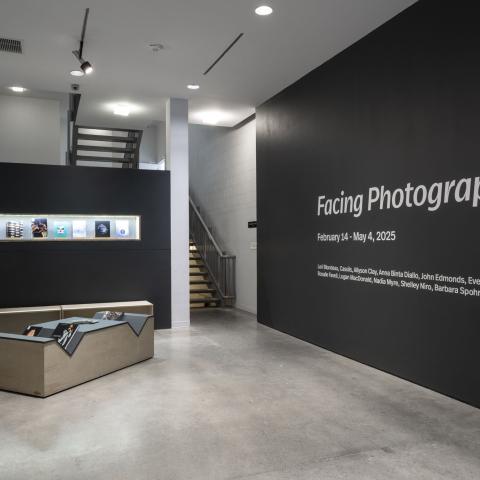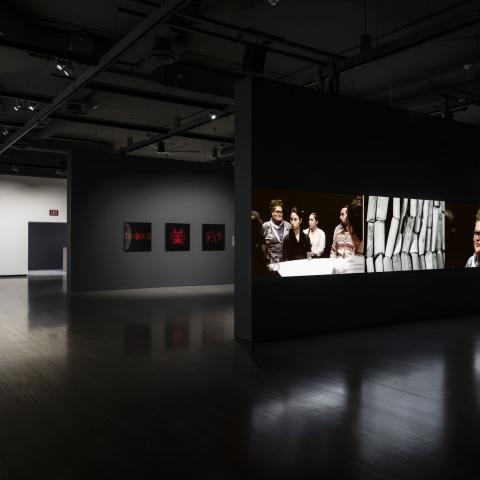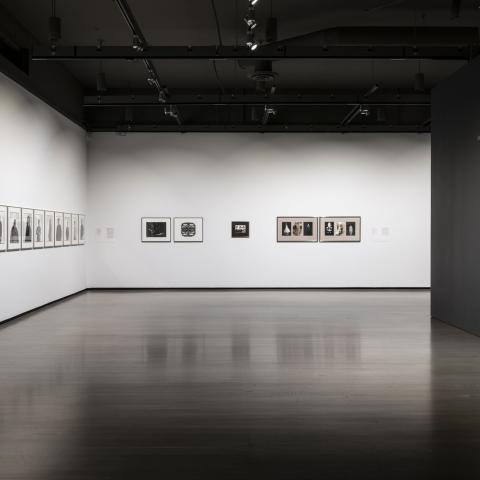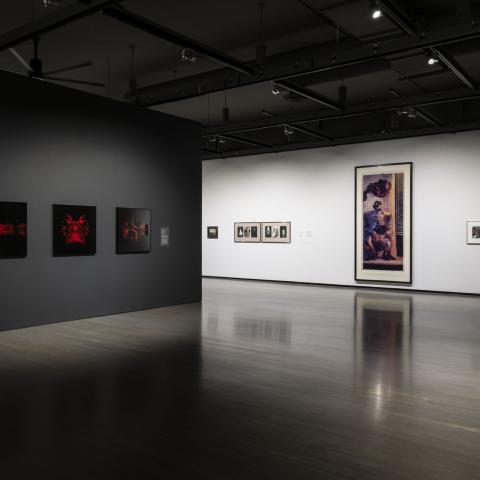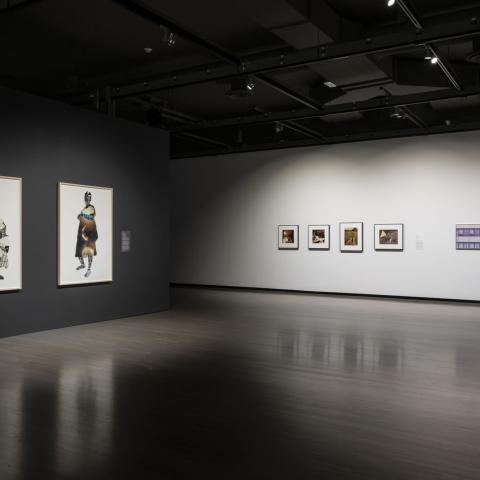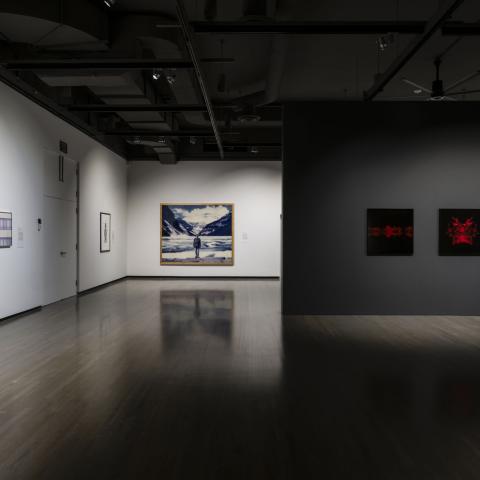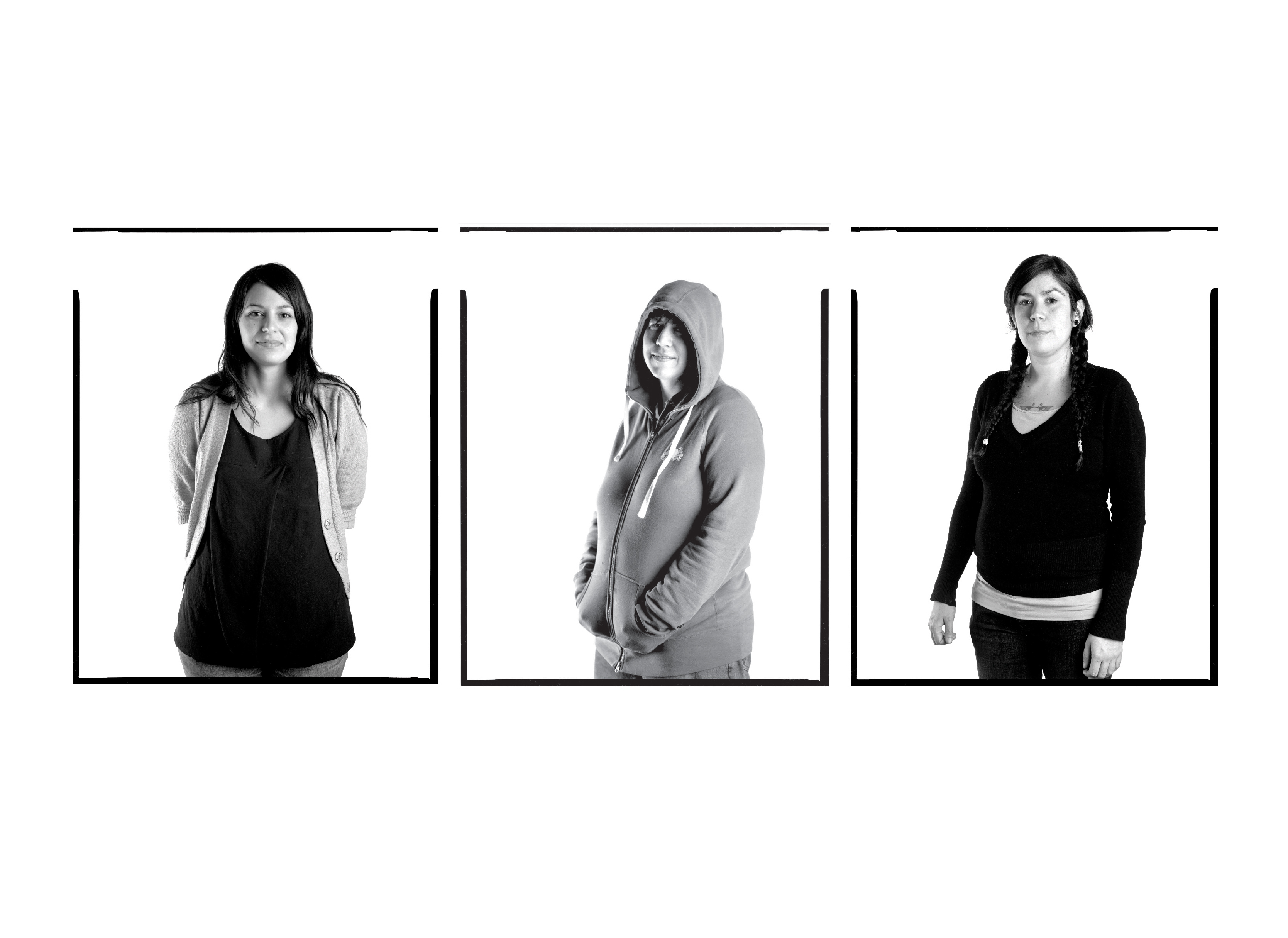
Rosalie Favell, Candice Hopkins, Banff, Alberta; Nadia Myre, Banff, Alberta; Tania Willard, Banff, Alberta; all 2008, from the series, Facing the Camera, 2008-2018.
Facing Photographs
Lori Blondeau, Cassils, Allyson Clay, Anna Binta Diallo, John Edmonds, Evergon, Rosalie Favell, Logan MacDonald, Nadia Myre, Shelley Niro, Barbara Spohr, and Jin-me Yoon
February 14 - May 4, 2025
Opening Reception
February 13, 2025, 5 pm - 8 pm
Facing Photographs conceptually departs from the work of Rosalie Favell, celebrated Winnipeg-born artist of Métis heritage who produced over five hundred individual portraits that comprise the series, Facing the Camera. The series was initiated at Banff Centre when Favell was on residence and in the company of other Indigenous artists, sought to create a document of this group that later grew to include photographs of artists and arts workers in Canada, Australia and the United States. Thirteen works depicting the residency cohort and visiting artists at Banff Centre in 2008 are presented in the exhibition. In writing on the work, Favell notes,
I use the portrait convention to acknowledge the agency of the individual in bringing together in a conscious and unconscious way, the numerous cultural and personal factors through which the sense of self is expressed. This idea applies to me taking pictures of my self, and others, who stand before my camera, seeing their selves revealed in the photograph. [1]
Drawing inspiration from Favell’s major series, Facing Photographs assembles works primarily selected from Banff Centre’s Permanent Collection that take up questions of agency in relation to representations of self or those with whom the artist shares identification or social worlds. The presented works directly or implicitly engage with photography’s entanglement with the colonial project, refute fixed conceptions of identity, or reflect modes of self-representation and its politics. In addition to contemporary lens-based media, the exhibition includes portraits in other media or work conceptually tied to ideas of portraiture.
[1] Rosalie Favell, FACING THE CAMERA: The Complete Series (2008-2018). Website: https://rosaliefavell.com/portfolio/facing-the-camera-complete-series/. The concept of agency in relation to the work is also referenced in the online exhibition text for (Re)facing the Camera, curated by Michelle LaVallee, presented at the MacKenzie Art Gallery, Regina from August 29 to November 22, 2015. Website: https://mackenzie.art/exhibition/rosalie-favell/.
Facing Photographs is made possible through the generous support of the Canada Council for the Arts, Alberta Foundation for the Arts, Government of Canada and Government of Alberta. The exhibition is presented in partnership with Exposure Photography Festival.
